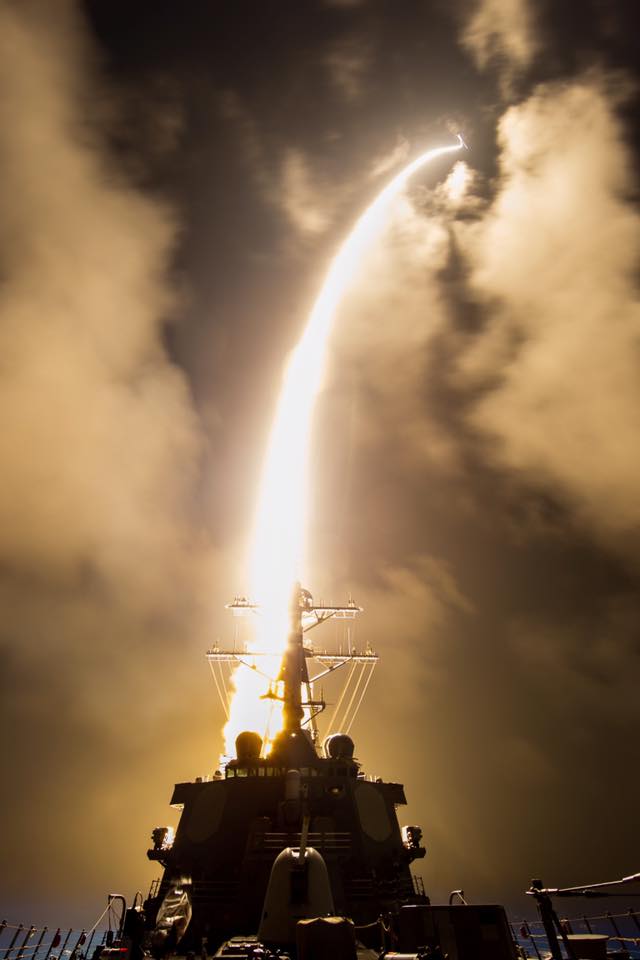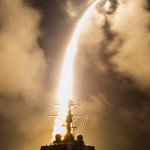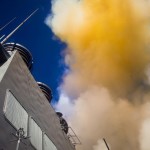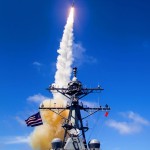USS John Paul Jones (DDG-53) Participates in the Multi-Mission Warfare Flight Test
Between July 28 and August 1 off the coast of Hawaii, the Aegis BMD Baseline 9 ship USS John Paul Jones (DDG-53), through a series of integrated air and missile defense intercept tests, validated a new capability to defeat the most sophisticated cruise and short-range ballistic missile threats. These tests prove out a simultaneous air and missile defense capability for the upcoming U.S. Aegis Baseline 9 ships. Three ships are currently equipped with Baseline 9, with more coming online in future. In most of their missions, these Baseline 9 ships will use their capability for area defense in the complete air and missile defense of U.S. Aircraft Carrier Strike Groups.
These significant tests validate the Baseline 9 system for not only area missile defense, but an air defense capability to protect themselves in hostile environments. The Baseline 9 system is not only in current and future U.S. Aegis Ships, it is also in the Aegis Ashore site in Hawaii and in the upcoming U.S. Aegis Ashore sites in Romania and Poland. These Aegis Ashore sites have the capability to provide area defense by intercepting ballistic missiles in space as well as to defend themselves against air breathing threats inside the atmosphere at long distances with SM-6 interceptors. The Baseline 9 system will allow them to enable launch and engage off of other deployed Aegis Baseline 9 systems.
The U.S. State Department has not designated the Aegis Ashore sites in Romania and Poland for air defense interceptors and software and therefore has not enabled the sites for Baseline 9 air defense capability. These decisions were made by the Obama Administration to appease Russia in an attempted “reset of relations” in 2009. Since Russia annexed the Ukrainian territory of Crimea in 2014, Moscow has increased military aircraft intrusions into NATO air space and conducts blatant flyovers on Aegis Ships in international waters in the nearby Black Sea.
Approximately 100 American Sailors at each Aegis Ashore site will operate what could be the first deployed Aegis weapon system that does not have air defense capability to defend its sailors. Should tensions rise at the Romanian or Polish Aegis Ashore site, the United States would be forced to rely on either the air defenses of the host country, which is limited or non existent for the today’s threat, or the costly mobilization of limited U.S. Army Air and Missile Defense Patriot units from other areas of the world to defend these sites. Because of this untenable situation, the United States Congress has included amendments to the FY16 NDAA to override the Administration to fund and enable these Aegis Ashore sites to have full air defense capability and corresponding interceptors. Click here to read a summary of the House version of the NDAA, and here to read a summary of the Senate’s version.
Don’t give up the Ship




